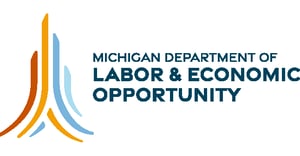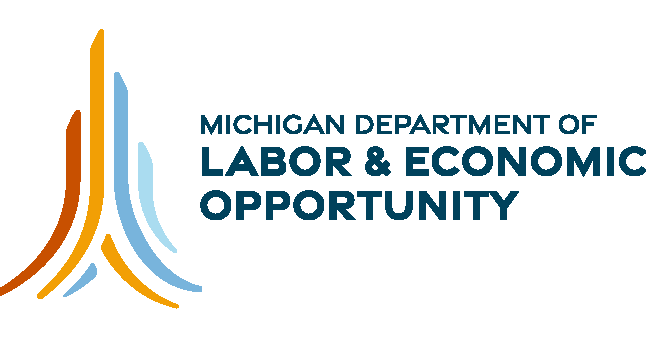Workforce plan lays out strategies to train workers, grow middle-class and power Michigan’s business and entrepreneurial spirit
LANSING, Mich.—Gov. Gretchen Whitmer today released the Michigan Statewide Workforce Plan. The comprehensive, all-access roadmap lays out ambitious strategies and data-driven actions needed to build on Michigan’s success and ensure all Michiganders have the skills, opportunities, and support they need to make it in Michigan.
The Michigan Statewide Workforce Plan, unanimously approved by the Michigan Workforce Development Board, marks the first time the State of Michigan has laid out a formal vision to create jobs, support workers and employers. It is yet another example of how Michigan is leading the way in workforce development. Michigan’s workforce system is #1 in credential attainment for adults, #2 in helping adults get employed and #6 in the nation for registered apprenticeships. Michigan serves more workforce participants than any other state in the Midwest.
“Michigan’s workforce embodies the grit and innovation that defines our state,” said Whitmer. “Every Michigander deserves a fair shot at success, and it’s our collective responsibility to ensure opportunity reaches every corner of the state. With the Michigan Statewide Workforce Plan, we are charting a course toward a future that empowers individuals, strengthens the employers in our communities and propels Michigan’s economy forward for generations to come.”
The Michigan Statewide Workforce Plan includes three core pillars with corresponding goals and strategies that will help the state address key workforce challenges, including a lack of skilled talent due to the changing economy and barriers Michiganders face when trying to access job opportunities. These three pillars include:
- Help More Michiganders Earn a Skills Certificate or Degree: Increase the number of Michiganders with the skills needed for the jobs of today and tomorrow by creating a nimble and responsive education and talent pipeline. The goal is to grow the number of working-age adults with a skill certificate or college degree from 51.1% today to 60% by 2030.
- Increase Access to Opportunities that Grow the Middle Class: Build Michigan’s middle class by removing barriers to education, employment and quality of life so that by the end of 2027, 75,000 households have moved into the middle class, improving Michigan’s middle-class ranking from 28th to top 10 in the nation.
- Support Business and Entrepreneurial Growth through Talent Solutions: Grow good-paying jobs by connecting businesses with the talent they need to thrive in Michigan with the end goal of making Michigan a Top 10 state for labor force participation rate growth by the end of 2027.
“The state’s transition to clean energy, in addition to the federal dollars Michigan is bringing home to support transformative projects, is creating new and exciting opportunities for businesses and workers across our state,” said Susan Corbin, Director of the Michigan Department of Labor and Economic Opportunity. “Every Michigander should have access to the skills and opportunities they need to build brighter futures. By working collaboratively across state departments and communities to provide the tools and resources businesses and workers need to thrive, we can provide a roadmap that enables them to seize the jobs and economic opportunities on the horizon.”
The Michigan Statewide Workforce Plan ties into LEO’s new All-Access Michigan approach, highlighting LEO’s critical role in the development and implementation of broad-stroke strategies to drive individual economic success and growth for the state. Using unique strategies and programs and innovative partnerships, LEO is addressing structural challenges that have historically prevented people and businesses from achieving their full potential. Programs that fall under All-Access Michigan include the Going PRO Talent Fund, EV Jobs Academy, Registered Apprenticeships, and many others.
The plan highlights that for Michigan to achieve quality job growth benefiting all residents, it is crucial to prioritize support for business competitiveness, expansion and talent development. According to a 2022 MEDC survey, hiring and locating talent was the top concern for Michigan small businesses.
“As we implement the Make it in Michigan strategy focused on people, places, and projects, the MEDC is pleased to continue our work alongside Governor Whitmer, LEO and legislative partners on this responsive solution that personifies the Team Michigan approach of being an efficient, one-stop shop for businesses of all sizes to succeed,” said Quentin L. Messer, Jr., CEO of the Michigan Economic Development Corporation. “Every day, we work hard to ensure we’re not only attracting and retaining businesses, but also providing the greatest asset for any company – skilled talent, whether through progress toward a certificate, training, or degree – and giving talented Michiganders a great place to call home. Across state government, as we demonstrate that ‘more people can in Michigan,’ Team Michigan is committed to accelerating a state business environment where it is easier for businesses to identify and connect with Michiganders trained in solving today’s commercial challenges and identifying tomorrow’s unknown opportunities.”
From preschool to postsecondary to prosperity, Michigan has a strong network of local, regional, and state partners that are helping children, students and working adults develop new skills. The Michigan Statewide Workforce Development Plan outlines a collaborative vision where education institutions, state departments and community organizations work together to ensure all Michiganders have access to opportunities, training and support they need to achieve success.
“The Michigan Statewide Workforce Plan acknowledges that building a strong workforce begins long before you’re looking for a job,” said Michelle Richard, Acting Director of the Michigan Department of Lifelong Education, Advancement, and Potential. “It starts with ensuring high quality, affordable options are available from early childhood education through postsecondary for every Michigander, regardless of their address or income. We look forward to working with our partners across the state to make the vision of Michigan’s first workforce plan a reality that improves the quality of life for all of us.”
The Michigan Statewide Workforce Development plan was approved by the Michigan Workforce Development Board on Monday, March 18 at their meeting in Detroit. Several state departments developed the plan with input from leaders from labor, business, community and other economic and workforce development leaders.
“The Michigan Statewide Workforce Plan brought together a diverse group of stakeholders to set a vision to help Michigan become a Top 10 state for growth and prosperity,” said Jeff Donofrio, president and CEO of Business Leaders for Michigan and Interim Chair of the Workforce Development Board. “Now the harder work begins to implement the strategies around increasing the number of Michiganders with a degree or credential, removing barriers to opportunities, and enabling entrepreneurial and business growth so that we can achieve these goals.”
“Michigan’s 31 community and tribal colleges applaud the Michigan Workforce Development Board’s release of the comprehensive statewide workforce plan,” said Brandy Johnson, President of the Michigan Community College Association. “The Whitmer administration has maintained a steadfast commitment to boosting postsecondary educational attainment, particularly among working-aged adults as we sprint toward the Sixty by 30 goal. Our colleges will continue working shoulder-to-shoulder with state partners and local employers to develop the talent needed in our ever-evolving labor market.”
“There are few things more important to our future success as a state than providing solid pathways to rewarding, sustainable careers,” said Lee Graham, Executive Director, Operating Engineers 324 Labor-Management Education Committee and Michigan Workforce Development Board Member. “The Michigan Statewide Workforce Plan is a robust, thoughtful, and well-defined roadmap to achieve just that. The Plan’s inclusion of Registered Apprenticeships – “earn while you learn” accredited programs – highlights the great opportunities these programs provide, and we applaud their continued support.”
“Employers in Michigan struggle to fill jobs, Michiganders needs support gaining the skills for in-demand careers and students need help with career navigation," said Shana M. Lewis, Director, National Workforce Development and Talent Supply Innovation for Trinity Health, Michigan Workforce Development Board Member and Michigan Works! Association Board Member. “The Workforce Development Plan is an essential guide for the State of Michigan to help close those gaps and to focus on building our workforce. I’m pleased to be participating in this collaborative work between the State of Michigan and Michigan employers.”
View the full Workforce Development Plan on the Workforce Board web page.
Visit www.michigan.gov/AllAcess to learn more about resources available to businesses and workers.
###
















